Category Archives: Testing
Unit Tests & Data Coverage for Machine Learning Models

This post represents thoughts on what would it look like planning unit tests for machine learning models. The idea is to perform automated testing of ML models as part of regular builds to check for regression related errors in terms of whether the predictions made by certain set of input data vectors does not match with expected outcomes. This brings up some of the following topics for discussion: Why unit testing for machine learning models? What would unit tests for machine learning models mean? Data coverage or code coverage? Why unit testing for Machine Learning models? Once a model is built, the challenge is to monitor the performance metrics of the models …
Why is QA needed for Machine Learning Models?
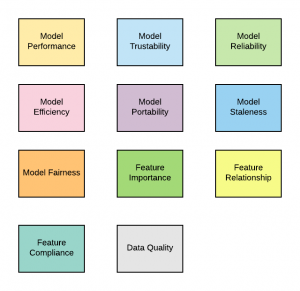
Given that the machine learning models are also a kind of conventional software application, the quality assurance principles applied to the conventional software development would or should also apply to build the machine learning models. In this post, you would learn about some of the important reasons as to why Quality Assurance (QA)is important to make sure that the machine learning models of only high quality are deployed in the production. Given that the machine learning models are said to be non-testable, it presents a set of challenges to do the quality control checks or perform testing of machine learning models from a quality assurance perspective. In this relation, I …
Testing Machine Learning Models on Dual Coding Principles
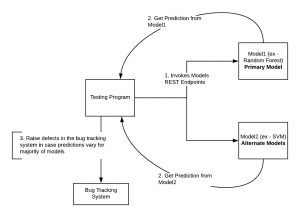
This post intends to propose a technique termed as Dual Coding for testing or performing quality control checks on machine learning models from quality assurance (QA) perspective. This could be useful in performing black box testing of ML models. The proposed technique is based on the principles of Dual Coding Theory (DCT) hypothesized by Allan Paivio of the University of Western Ontario in 1971. According to Dual Coding Theory, our brain uses two different systems including verbal and non-verbal/visual to the gather, process, store and retrieve (recall) the information related to a particular subject. One of the key assumptions of dual coding theory is the connections (also termed as referential …
QA – Blackbox Testing for Machine Learning Models
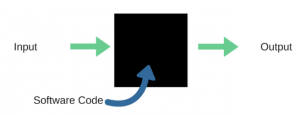
Data science/Machine learning career has primarily been associated with building models which could do numerical or class-related predictions. This is unlike conventional software development which is associated with both development and “testing” the software. And, the related career profiles are software developer/engineers and test engineers/QA professional. However, in the case of machine learning, the career profile is a data scientist. The usage of the word “testing” in relation to machine learning models is primarily used for testing the model performance in terms of accuracy/precision of the model. It can be noted that the word, “testing”, means different for conventional software development and machine learning models development. Machine learning models would …
Assessing Quality of AI Models from QA Standpoint
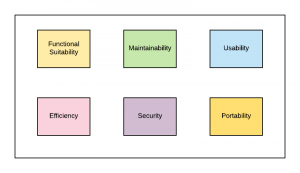
In this post, you will learn about the definition of quality of AI / machine learning (ML) models. Getting a good understanding of what is the high and low quality of AI models would help you design quality control checks for testing machine learning models and related quality assurance (QA) practices. This post would be a good read for QA professionals in general. However, it would also help set perspectives for data scientists and machine learning experts. The following are some of the key quality traits which are described in detail for assessing the quality of AI models: Functional suitability Maintainability Usability Efficiency Security Portability When designing QA practice and related quality control checks, all of the above would need to be considered for testing …
QA – Metamorphic Testing for Machine Learning Models
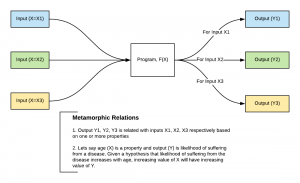
In this post, you will learn about how metamorphic testing could be used for performing quality control checks/testing on machine learning models. The post is primarily meant for data science (QA) specialists to plan the test cases to test the machine learning (ML) model implementation from QA perspective. Testing machine learning models from a quality assurance perspective is different from testing machine learning models for accuracy/performance. The word “testing” is one of the conflicting technical nomenclatures given its usage by machine learning experts and software engineering community in general. In this post, the following topics are discussed: Introduction to metamorphic testing Why metamorphic testing for machine learning models? Automated metamorphic testing of ML models Introduction …
QA – Why Machine Learning Systems are Non-testable

This post represents views on why machine learning systems or models are termed as non-testable from quality control/quality assurance perspectives. Before I proceed ahead, let me humbly state that data scientists/machine learning community has been saying that ML models are testable as they are first trained and then tested using techniques such as cross-validation etc., based on different techniques to increase the model performance, optimize the model. However, “testing” the model is referred with the scenario during the development (model building) phase when data scientists test the model performance by comparing the model outputs (predicted values) with the actual values. This is not the same as testing the model for any given input for which the …
QA – Testing Features of Machine Learning Models
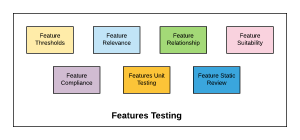
In this post, you will learn about different types of test cases which you could come up for testing features of the data science/machine learning models. Testing features are one of the key set of QA tasks which needed to be performed for ensuring the high performance of machine learning models in a consistent and sustained manner. Features make the most important part of a machine learning model. Features are nothing but the predictor variable which is used to predict the outcome or response variable. Simply speaking, the following function represents y as the outcome variable and x1, x2 and x1x2 as predictor variables. y = a1x1 + a2x2 + a3x1x2 + e In the above function, …
QA of Machine Learning Models with PDCA Cycle
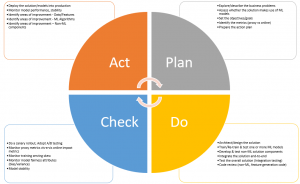
The primary goal of establishing and implementing Quality Assurance (QA) practices for machine learning/data science projects or, projects using machine learning models is to achieve consistent and sustained improvements in business processes making use of underlying ML predictions. This is where the idea of PDCA cycle (Plan-Do-Check-Act) is applied to establish a repeatable process ensuring that high-quality machine learning (ML) based solutions are served to the clients in a consistent and sustained manner. The following diagram represents the details. The following represents the details listed in the above diagram. Plan Explore/describe the business problems: In this stage, product managers/business analyst sit with data scientist and discuss the business problem at hand. The outcome of this …
QA & Data Science – How to Test Features Relevance
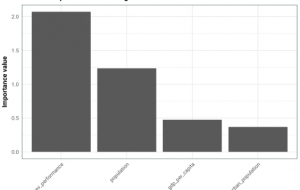
In this post, I intend to present a perspective on the need for QA / testing team to test the feature relevance when testing the machine learning models as part of data science QA initiatives, and, different techniques which could be used to test or perform QA on feature relevance. Feature relevance can also be termed as feature importance. Simply speaking, a feature is said to be relevant or important if it adds real predictive value to the underlying model. The relevant features must display a stable statistical relationship or association with the outcome variable. Well, an association does not imply a causation. However, a relevant feature or a feature …
Quality Assurance / Testing the Machine Learning Model
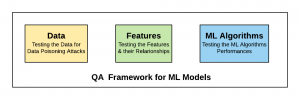
This is the first post in the series of posts related to Quality Assurance & Testing Practices and Data Science / Machine Learning Models which I would release in next few months. The goal of this and upcoming posts would be to create a tool and framework which could help you design your testing/QA practices around data science/machine learning models. Why QA Practices for testing Machine Learning Models? Are you a test engineer and want to know about how you could make difference in AI initiative being undertaken by your current company? Are you a QA manager and looking for or researching tools and frameworks which could help your team perform QA with …
Selenium Interview Questions and Answers – Set 1

In this post, you will take the objective test (interview questions and answers) to check your knowledge of Selenium. This could prove to be helpful in preparing for upcoming interviews related to Selenium automated testing. Selenium Quiz – Objective Questions and Answers [wp_quiz id=”6931″] Selenium Sample Interview Questions The following are some of the interview questions which can be prepared: What is the difference between Selenium 2 and Selenium 1? When would you want to use Selenium Grid? What are the different web element location strategies which are used to locate elements on the web page? What is the difference between Selenium IDE and Selenium WebDriver? What is the difference between andWait …
Top 7 Reasons to use Dockers for Testing Your Application

This article represents some of the key reasons on why one should consider using dockers for testing their applications. Some of the points in this blog is taken from the video, Stop being Lazy and Test your Software presented by Laura Frank, currently working in CodeShip. Do check out videos for gathering greater details. Please feel free to comment/suggest if I missed to mention one or more important points. Also, sorry for the typos. Following are the key points described later in this article: What are key testing bottlenecks? How could Dockers alleviate Testing Bottlenecks Key Testing Bottlenecks Slower performing tests or slower running tests due to bad coding or not sufficient infrastructure Traditional testing …
AngularJS Hello World Unit Testing Code Example

The article intends to provide take away code to get started with unit testing while working with AngularJS. The underlying Javascript unit testing framework used for testing the AngularJS code sample is Jasmine. Controllers.js ControllersSpecs.js You may want to pay attention to some of the following facts in relation with unit testing vis-a-vis unit testing controller methods: Use AngularJS dependency injection feature to pass on dependencies to Angular components such as controller, filters, directives etc. Following code does the magic of injecting $rootScope and $controller which is also represented in the code samples later in this article. For rookies, following should be sufficient for cut-copy-paste to get started with unit …
Quick Reference to Jasmine – Javascript Unit Testing Framework
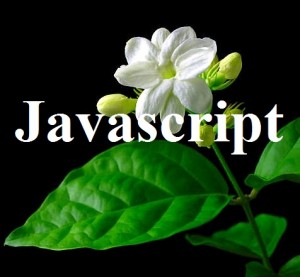
The article represents the fundamentals concepts and code samples around Jasmine, a popular Javascript unit testing framework.TO get started, download the framework from https://github.com/pivotal/jasmine/releases. For detailed examples, look at http://jasmine.github.io/edge/introduction.html. It All Starts with “describe” and “it” Function Blocks In Jasmine terminologies, a set of tests is collectively called as a “suite”. The test suite is defined using “describe” function block. Each test is called as a “spec” and defined using “it” function block. A test suite can have multiple test specs and also, test suites. This implies that a “describe” function block can have multiple “it” function blocks and also, “describe” function blocks contained within. One of the key …
Javascript Unit Testing using Jasmine – Code Examples

The article lists down some of the unit tests samples for testing Javascript code. The unit tests in this article tests the javascript code presented in this article, “What are Objects in Javascript?”. Before presenting code samples, lets try and understand what is Jasmine? As on the Jasmine website, it is defined as a behavior-driven development framework for testing JavaScript code. It does not depend on any other JavaScript frameworks. It does not require a DOM. And it has a clean, obvious syntax so that you can easily write tests. By what I learnt so far, I could vouch for the statement “And it has a clean, obvious syntax so that …
I found it very helpful. However the differences are not too understandable for me